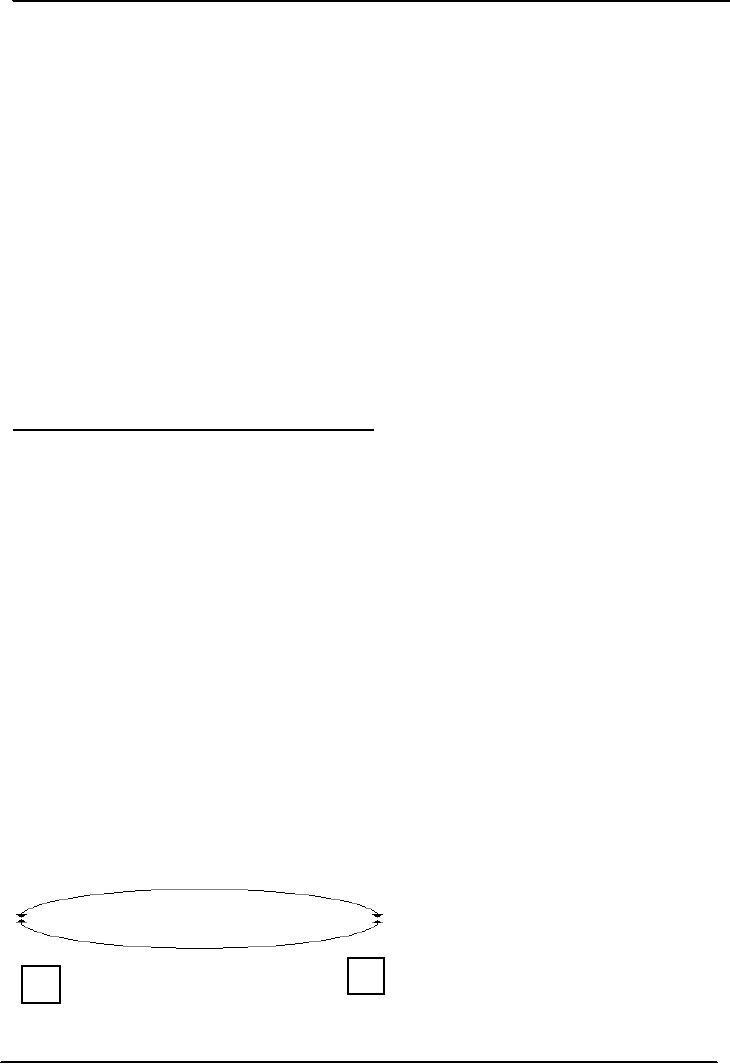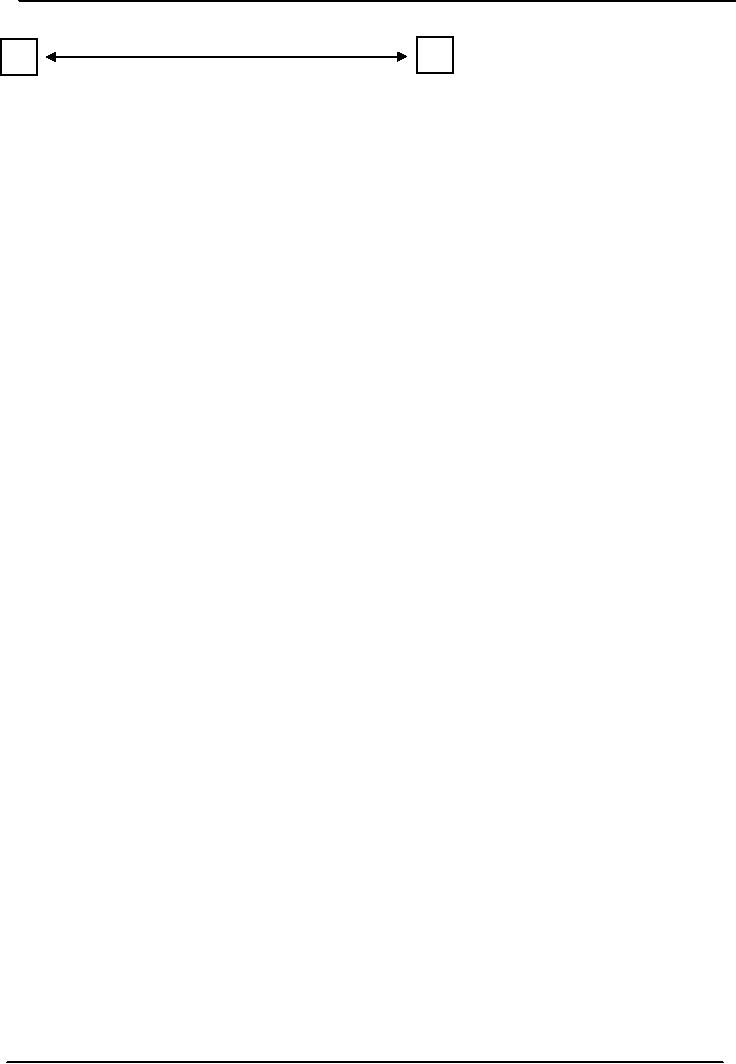 |
MARRIAGE & FAMILY COUNSELING:Concepts Related to Circular Causality |
| << MARRIAGE & FAMILY COUNSELING:Systems Theory, Postwar changes |
| CAREER COUNSELING:Situational Approaches, Decision Theory >> |

Theory
and Practice of Counseling -
PSY632
VU
Lesson
41
MARRIAGE
& FAMILY COUNSELING
Family
Counseling
�
Families
enter counseling for a number of
reasons. Usually, there is an identified
patient (an
individual
who is seen as the cause of
trouble within the family
structure) that family
members use
as
their ticket of entry. Most
family counseling practitioners do not
view one member of a family
as
the
problem but instead work
with the whole family
system.
�
Family
counseling has expanded
rapidly since the mid-1970s
and encompasses many aspects
of
couples
counseling. While a few family counselors
are linearly based and work
on cause-and-effect
relationships,
most are not. Family therapy
deals with problems
involving family structure
and
family
interaction patterns. Many
family therapists assume
that family members fall
into rigid roles -
with
one person "designated" as the scapegoat
(i.e., as the "disturbed" family
member). Majority
operate
form a general systems
framework.
Goals:
�
Improving
communication between family
members.
�
Deemphasize
individual problems and
emphasize joint problems of
family.
The
Concept of Communication in Family
Therapy
�
Pathology
develops with communication failure
among family members.
�
Deals
with relationship between individual
member and family
system.
�
Therapy
works on correcting information or changing
manner of feedback.
�
Ackerman
believes that a constant
interchange between client, family,
and society gives
better
output.
Uses:
�
To
increase marital intimacy, to treat adolescent drug
abusers, to treat anorexics, and to
deal with
bereavement
issues after the death of some
family member, conflict
values in family, and
significant
marital
problems, etc.
�
Individual
person's problems in family
approach are considered
secondary problems because
focus
is
on joint problems faced by
every member in
family.
�
Began
with an adolescent as principle
patient.
Circular
Causality Versus Linear
Thinking
Family
approaches stress the structural
causality: the idea that
events are related through a
series of
interacting
feedback loops.
B
A
Circular
Causality
176

Theory
and Practice of Counseling -
PSY632
VU
B
A
Linear
Causality
Concepts
Related to Circular Causality
�
Nonsummativity:
The
family is greater than the sum of
its parts. It indicates that
it is necessary to see the
o
patterns
rather than the actions of any specific
members alone.
�
Equifinality:
Families
that experience a natural disaster
may become stronger or
weaker as a result.
o
Likewise,
healthy families may have
quite dissimilar backgrounds. Therefore,
the focus of
treatment
is on interactional family patterns rather
than particular conditions or
events.
�
Communication:
It
is important to attend to the two
functions of interpersonal messages:
content (factual
o
information),
and relationship (how the message is to
be conveyed).
�
Family
rules:
A
family's functioning is based on explicit
and implicit rules. Family
rules provide
o
expectations
about roles and actions that
govern family life. To help
families change
dysfunctional
ways of working, family
counselors have to help them define or
expand rules
under
which they operate.
�
Morphogenesis:
The
ability of the family to modify
its functioning to meet the
changing demands of
o
internal
and external factors is known as
morphogenesis. Instead of just talking,
family
members
may need to try new
ways of behaving.
�
Homeostasis:
Like
biological organisms, families
have a tendency to remain in a
stable state of
o
equilibrium
unless otherwise forced to change.
When a family member
unbalances the
family
through his or her actions,
other members quickly try to
rectify the situation
through
negative feedback.
Often,
a genogram is constructed to help
family members to detect
intergenerational patterns of
family
functioning
that have an impact on the
present.
Different
Forms of Family Therapy
�
Psychoanalytic
Family Counseling
�
Behavioral
Family Counseling
�
Structural
Family Counseling
�
Strategic
Family Counseling
�
Solution-focused
Family Counseling
Psychodynamic
Family Counseling
�
As
traditionally practiced, psychoanalysis
concentrates on individuals rather than
social systems
such
as family. However, it broke the
tradition by working with intact
families. An initial goal
of
177

Theory
and Practice of Counseling -
PSY632
VU
psychodynamic
family counseling is to change the
personalities of the family members so
they can
work
with one another in a healthy and
productive way.
�
Object
relations are internalized residues of
early parent-child interactions. In
dysfunctional
families,
object relations continue to exert a negative influence in
present personal interpersonal
relationships.
�
Psychodynamic
family counselors concentrate on
helping family members
obtain insight and
resolve
family-of-origin conflicts or losses,
eliminating distorted projections,
reconstructing
relationships,
and promoting individual and
family growth.
Structural
Family Counseling
�
Structural
family counseling is based on
general system theory. In
working with families,
structural
family
counselors join with the
family in a position of leadership.
Counselors map within their
mind
the
structure of the family and determine
how it is stuck in a dysfunctional pattern.
They then
employ
a number of techniques aimed at getting the
family to change the way it
operates.
�
Techniques:
Working
within the family
interaction:
o
One
primary technique is to work with the
family's interaction. When family
members
repeat
nonproductive sequences of behavior or
demonstrate a detached or
enmeshed
position
in the family structure, the counselor
will rearrange the physical
environment so
they
have to act in a different
way.
Reframing
o
Structural
family counselors also use
reframing, a technique that involves helping
the
family
see its problem from a
different and more positive
perspective. For example, if
a
child
is misbehaving, the behavior may be
labeled as a naughty rather than crazy,
so child's
behavior
may be considered less
pathological.
Strategic
Family Counseling
�
Strategic
counselors take a systemic
view of problem behavior and
focus on the process rather
than
the
content of dysfunctional interactions. They strive to resolve
presenting problems and pay
little
attention
to instilling insight.
�
Techniques:
One
technique is to prescribe the
symptom.
o
Original
Homework assignments are to be
completed between
sessions.
o
Overall
treatment is short term and
pragmatic.
o
Solution-focused
Family Counseling
It
traces its roots to the work of
Milton Erickson (1954), particularly his
utilization
principle.
�
The
essence of solution focused
family counseling is that
clients create problems
because of their
perceptions
such as "I am depressed". To treat and
sove problems, concentration should be
on
some
exceptional time when the person is not
depressed.
�
Client
families are directed toward
solutions to situations that already
exist in the exceptions
178

Theory
and Practice of Counseling -
PSY632
VU
�
One
way of helping individuals
change perspective (from concentrating on
the negative to
emphasizing
the positive) is called miracle question.
In this intervention clients are
asked to imagine
that
the problem is already solved.
What will happen in regard
to their behavior? And how
will they
know
that the problem is
solved?
Varieties
of Family Counseling
�
Conjoint
Family Counseling
In
its process entire family is
seen by the counselor at the same time.
Counselor assigns tasks
and
imparts
direct instruction regarding human
relationship. Satire (1967) sees
counselor as the resource
person
and model of communication. Through
clear, crisp communication and by
assigning tasks
to
different members, counselor
plays active role during
therapy sessions.
�
Concurrent
family counseling
In
the process of concurrent family
counseling one counselor
sees all family but in
individual
sessions.
�
Collaborative
family counseling
In
collaborative family counseling each
family member sees a
different counselor. Then
counselors
collaborate
and discuss family as a
whole.
Career
Counseling
Historical
Perspective
�
Systematic
vocational guidance BY Frank
Parsons.
He
differentiates counseling from other
similar helping
professions.
He
coined the term counselor and talked
about 3 elements pertaining to
career selection in
his
book
"Choosing a Vocation". These
three elements are: traits of the
individual, demands of the
job,
and
the congruence between the both. He is
known as the father of systematic
vocational guidance.
His
conceptualization provided the basis for
a major early theoretical approach, the
trait-factor
theory.
�
What
used to be called vocational guidance at
that time is now referred to as career
counseling. In
career
counseling, all aspects of
individual needs (including
family, work and leisure)
are recognized
as
integral parts.
�
Career
counseling includes all
counseling activities associated with
career choices over a life
span.
Interchangeable
terms are job, occupation
and vocation but they refer to
different job positions
and
activities
of employment, but career is much
broader.
Importance
of Career Counseling (Crites,
1981)
Crites
lists important aspects of
career counseling which
includes the following:
�
Career
counseling can deal with the
inner and outer world of
individuals, whereas other
counseling
approaches
deal only with internal
events.
�
"Career
counseling can be therapeutic." Super
(1957), Williams (1962),
Williams and Hills
(1962),
Crites
(1969), and Krumboltz (1994)
have all found a positive
correlation between career
and
personal
adjustment.
�
"Career
counseling is more difficult than
psychotherapy" Crites states that to be
an effective career
counselor
a person must deal with
both personal and work
variables and must know
how the two
interact.
179

Theory
and Practice of Counseling -
PSY632
VU
Career
Counseling Theory
�
A
theory of career development can be
defined as a conceptual system
that identifies, describes,
and
interrelates important factors affecting
lifelong human involvement
with work.
�
Five
major types (Herr &
Cramer, 1984)
The
trait-factor approach
o
Decision
theory
o
Situational
approaches
o
Psychological-personality
based approach
o
Developmental
approach
o
180
Table of Contents:
- INTRODUCTION:Counseling Journals, Definitions of Counseling
- HISTORICAL BACKGROUND COUNSELING & PSYCHOTHERAPY
- HISTORICAL BACKGROUND 1900-1909:Frank Parson, Psychopathic Hospitals
- HISTORICAL BACKGROUND:Recent Trends in Counseling
- GOALS & ACTIVITIES GOALS OF COUNSELING:Facilitating Behavior Change
- ETHICAL & LEGAL ISSUES IN COUNSELING:Development of Codes
- ETHICAL & LEGAL ISSUES IN COUNSELING:Keeping Relationships Professional
- EFFECTIVE COUNSELOR:Personal Characteristics Model
- EFFECTIVE COUNSELOR:Humanism, People Orientation, Intellectual Curiosity
- EFFECTIVE COUNSELOR:Cultural Bias in Theory and Practice, Stress and Burnout
- COUNSELING SKILLS:Microskills, Body Language & Movement, Paralinguistics
- COUNSELING SKILLS COUNSELOR’S NONVERBAL COMMUNICATION:Use of Space
- COUNSELING SKILLS HINTS TO MAINTAIN CONGRUENCE:
- LISTENING & UNDERSTANDING SKILLS:Barriers to an Accepting Attitude
- LISTENING & UNDERSTANDING SKILLS:Suggestive Questions,
- LISTENING & UNDERSTANDING SKILLS:Tips for Paraphrasing, Summarizing Skills
- INFLUENCING SKILLS:Basic Listening Sequence (BLS), Interpretation/ Reframing
- FOCUSING & CHALLENGING SKILLS:Focused and Selective Attention, Family focus
- COUNSELING PROCESS:Link to the Previous Lecture
- COUNSELING PROCESS:The Initial Session, Counselor-initiated, Advice Giving
- COUNSELING PROCESS:Transference & Counter-transference
- THEORY IN THE PRACTICE OF COUNSELING:Timing of Termination
- PSYCHOANALYTIC APPROACHES TO COUNSELING:View of Human Nature
- CLASSICAL PSYCHOANALYTIC APPROACH:Psychic Determination, Anxiety
- NEO-FREUDIANS:Strengths, Weaknesses, NEO-FREUDIANS, Family Constellation
- NEO-FREUDIANS:Task setting, Composition of Personality, The Shadow
- NEO-FREUDIANS:Ten Neurotic Needs, Modes of Experiencing
- CLIENT-CENTERED APPROACH:Background of his approach, Techniques
- GESTALT THERAPY:Fritz Perls, Causes of Human Difficulties
- GESTALT THERAPY:Role of the Counselor, Assessment
- EXISTENTIAL THERAPY:Rollo May, Role of Counselor, Logotherapy
- COGNITIVE APPROACHES TO COUNSELING:Stress-Inoculation Therapy
- COGNITIVE APPROACHES TO COUNSELING:Role of the Counselor
- TRANSACTIONAL ANALYSIS:Eric Berne, The child ego state, Transactional Analysis
- BEHAVIORAL APPROACHES:Respondent Learning, Social Learning Theory
- BEHAVIORAL APPROACHES:Use of reinforcers, Maintenance, Extinction
- REALITY THERAPY:Role of the Counselor, Strengths, Limitations
- GROUPS IN COUNSELING:Major benefits, Traditional & Historical Groups
- GROUPS IN COUNSELING:Humanistic Groups, Gestalt Groups
- MARRIAGE & FAMILY COUNSELING:Systems Theory, Postwar changes
- MARRIAGE & FAMILY COUNSELING:Concepts Related to Circular Causality
- CAREER COUNSELING:Situational Approaches, Decision Theory
- COMMUNITY COUNSELING & CONSULTING:Community Counseling
- DIAGNOSIS & ASSESSMENT:Assessment Techniques, Observation
- FINAL OVERVIEW:Ethical issues, Influencing skills, Counseling Approaches